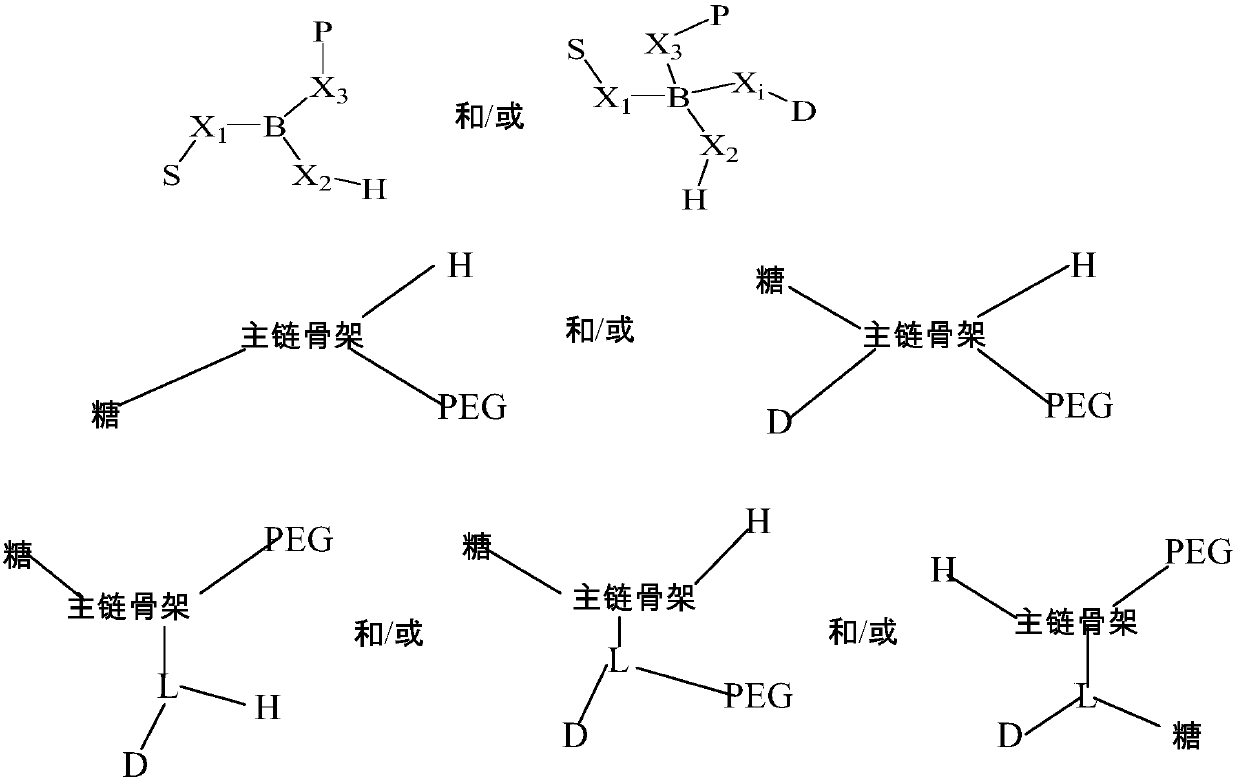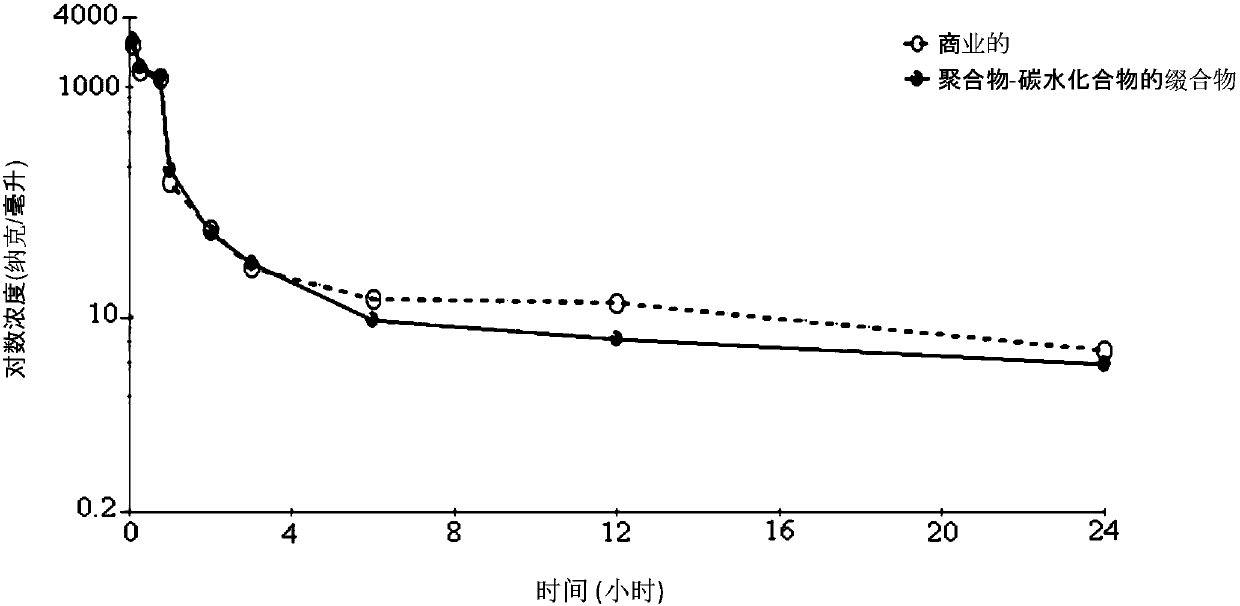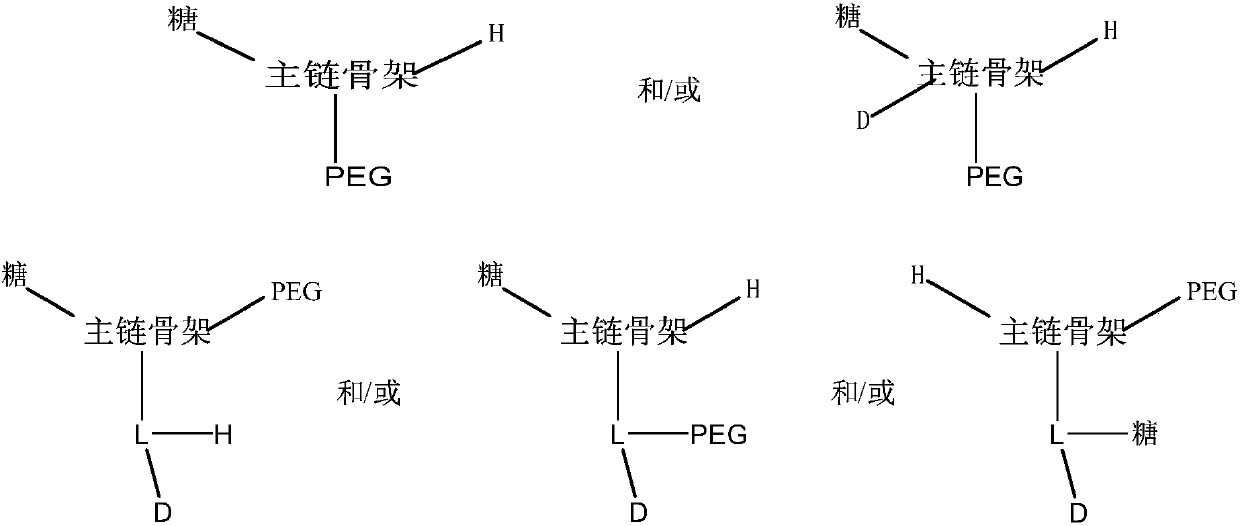Polymer-carbohydrate conjugates for drug delivery technology
A compound and chemical technology, applied in the direction of active ingredients of hydroxyl compounds, drug delivery, organic chemistry, etc., can solve problems such as increasing the boiling temperature and melting point of compounds, and decreasing
- Summary
- Abstract
- Description
- Claims
- Application Information
AI Technical Summary
Problems solved by technology
Method used
Image
Examples
Embodiment 1
[0132] Example 1. Preparation of amino groups protected by tert-butylcarbamate (Boc)
[0133] A high-yield and efficient synthetic method under catalyst-free and room temperature conditions has been reported before [Chankeshwara, SV and Chakraborti, AK. Org. Lett. , (2006); 8, 3259], and was used with some modifications. To the MeOH solution of the anthranilate-containing starting compound, di-tert-butyldicarbonate was added in a molar ratio of 1:1. The resulting mixture was stirred overnight at room temperature. When the reaction was complete, the solvent was removed under vacuum, the residue was dissolved in ethyl acetate and washed once with saturated aqueous ammonium chloride solution, then washed with Na 2 SO 4 Drying and concentration afforded the expected product (>90%). An example of this reaction is illustrated in Reaction Scheme 5, where R is the main structure of the central backbone. This method produces N-t-Boc derivatives chemoselectively without any by-pro...
Embodiment 2
[0136] Example 2. Deprotection of Boc-protected amino groups
[0137] Useful reagents for the deprotection of tert-butyl carbamate or tert-butyl ester include phosphoric acid and trifluoroacetic acid. The reaction yield is high, and it is very convenient [Li, B. Berliner, M. etc, J. Org. Chem., 2006; 71, 9045]. In Boc-carbamate (10% crude product) in CH 2 Cl 2 An equal volume of trifluoroacetic acid was added to the solution. The resulting solution was stirred overnight at room temperature, then the solvent was removed by evaporation and the residue was redissolved in CH 2 Cl 2 , then saturated NaHCO 3 washed with MgSO 4 dry. The solvent was evaporated and used directly in the next step without further purification.
Embodiment 3
[0138] Example 3. Preparation of N-Boc-cholesterol serine ester
[0139] Dissolve 0.03 mol of N-Boc-serine in 100 mL of chloroform with constant stirring under nitrogen. 0.03 mol of cholesterol chloroformate dissolved in 100 mL of chloroform was added to this heterogeneous mixture of N-Boc-serine, followed by 10 mL of anhydrous pyridine. The reaction was stirred continuously at room temperature for 30 minutes, the mixture became homogeneous and the reaction was complete when no detectable cholesterol chloroformate was present in the mixture. The solvent was removed under vacuum and the crude product was used in the next step without further purification. The resulting product (70-80% yield) is shown in Chemical Structure 2:
[0140]
[0141] Chemical structure 2
PUM
 Login to View More
Login to View More Abstract
Description
Claims
Application Information
 Login to View More
Login to View More - R&D
- Intellectual Property
- Life Sciences
- Materials
- Tech Scout
- Unparalleled Data Quality
- Higher Quality Content
- 60% Fewer Hallucinations
Browse by: Latest US Patents, China's latest patents, Technical Efficacy Thesaurus, Application Domain, Technology Topic, Popular Technical Reports.
© 2025 PatSnap. All rights reserved.Legal|Privacy policy|Modern Slavery Act Transparency Statement|Sitemap|About US| Contact US: help@patsnap.com



